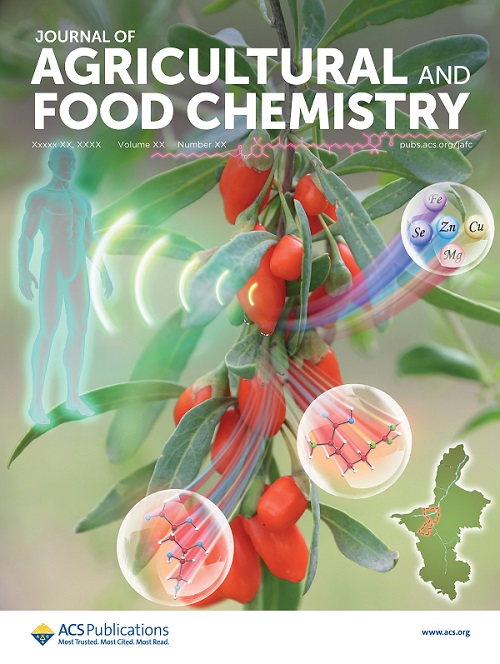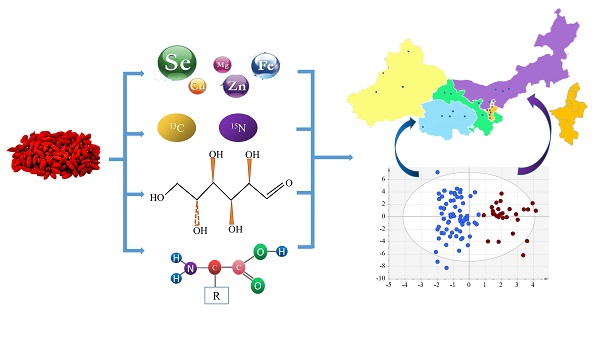

To develop sophisticated approaches for distinguishing goji origins, 325 wolfberry fruit samples of a certain cultivar, plant age, drying method and collection season were gathered from 26 producing areas across Northwest China in 2017 and 2018. We employed 49 indices, including stable isotopes, earth elements, soluble amino acids, and saccharides, to identify the regions oforigin of these goji fruits. Analysis of variance (ANOVA) and heritability analysis were used to assess the effects of the environment (producing areas), cultivar, plant age, drying process, and collection season. Samples from the same place can be classified and partially discriminated using principal component analysis (PCA). We were able to distinguish fruits produced in Zhongning County from those produced in the other five producing provinces using orthogonal projection to latent structure-discriminant analysis (OPLS-DA). Calcium (Ca), manganese (Mn), ornithine (Orn), cystine (Cys-Cys), glutamate (Glu), phenylalanine (Phe), phosphoserine (Ps), serine (Ser), lysine (Lys), taurine (Tau), proline (Pro) and tyrosine (Tyr) indices were chosen using S-plots and heritability analysis, and their repeatability was established with samples collected in 2018. The indices selected in this study can distinguish gojis produced in Zhongning County from fruit originating from five other provinces with high repeatability, which was validated with various cultivars, drying methods, harvest seasons and plant ages and with heritability analysis.
This study result entitled “Discrimination of geographical origins of wolfberry (Lycium barbarum L.) fruits using stable isotopes, earth elements, free amino acids and saccharides” was published in Journal of Agricultural and Food Chemistry (IF2021=5.263) (https://doi.org/10.1021/acs.jafc.1c06207). Dr. Gong Haiguang is the first author, and Professor Wang Ying is the corresponding author of this paper.



